Electrical discharges typically produce a plasma of ionized gas which is usually luminous. Photography of the discharges is prelude to more quantitative diagnostics. It is used to identify the spatial distribution of the plasma, determining, for example, if the plasma is diffuse or constricted. Often the results are spectacular and aesthetic. Browse through the photos in this gallery and see for yourself.
Lightnings

Lightning is the spectacular result of electrical breakdown in air. It follows the buildup of electric charge during storms, generating intense electric fields between the clouds and the earth, or between two cloud masses. The hot, bright plasma in the discharge channel heats the air so rapidly that shock waves form. It is these shock waves which are heard as thunder.
Vacuum arcs are high current electrical discharges in which the discharge itself produces the plasma medium by vaporization and ionization of the electrode material. Different vacuum arc modes are differentiated according to the source of the plasma generation.
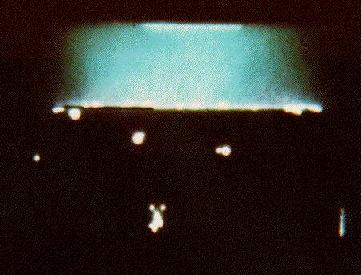 The most frequently encountered vacuum
arc mode, the cathode spot or cathodic arc, the plasma is produced by one or
more minute, highly luminous areas on the cathode surface, known as cathode
spots. Each cathode spot emits a plasma jet of highly ionized metal vapor,
typically with velocities of 10 km/s. Generally the number of cathode spots
present is proportional to the arc current.
The most frequently encountered vacuum
arc mode, the cathode spot or cathodic arc, the plasma is produced by one or
more minute, highly luminous areas on the cathode surface, known as cathode
spots. Each cathode spot emits a plasma jet of highly ionized metal vapor,
typically with velocities of 10 km/s. Generally the number of cathode spots
present is proportional to the arc current.
The accompanying photograph shows a 2 kA arc between 25 mm diameter copper electrodes, spaced about 10 mm apart. The bottom electrode is the cathode, and several individual cathode spots are distinctly visible on the sides of the cylindrical cathode. Most of the cathode spots, which probably number about 20-25, are on the top surface of the electrode, which has been eroded by the arc to a slightly concave surface. The individual cathode spots are not distinct. In this multi-cathode-spot mode, the plasma jets from the individual spots on the cathode surface produce a combined plasma jet, seen as a blue-green glow in the inter-electrode region. This plasma generally flows to the anode, upon which it condenses. The self magnetic field generated by the 2 kA arc current causes a constriction in the current flow and heat flux to the anode, producing a hot region on the anode surface which appears here as a large white spot on the surface of the upper electrode.
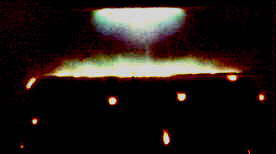 When a region of the
anode becomes sufficiently hot to emit vapor, an anode spot is formed. If the
anodic vapor pressure is sufficiently high to overcome the momentum flux from
the cathode spot jets, an anodic plasma plume will penetrate into the
inter-electrode space, as seen here extending downwards from the upper electrode
(anode). This photograph was taken a few ms's after the previous photo, during
the same Cu vacuum arc pulse, but here with a current of about 4 kA. The anodic
plasma plume also confines the propagation of the cathodic plasma jet, here
shown as a narrow layer close to the cathode surface.
When a region of the
anode becomes sufficiently hot to emit vapor, an anode spot is formed. If the
anodic vapor pressure is sufficiently high to overcome the momentum flux from
the cathode spot jets, an anodic plasma plume will penetrate into the
inter-electrode space, as seen here extending downwards from the upper electrode
(anode). This photograph was taken a few ms's after the previous photo, during
the same Cu vacuum arc pulse, but here with a current of about 4 kA. The anodic
plasma plume also confines the propagation of the cathodic plasma jet, here
shown as a narrow layer close to the cathode surface.
Anode spots have practical importance in limiting the current interrupting ability of vacuum interrupters, which are high current circuit breakers used to protect electrical distribution systems. In an A.C. electrical circuit, the vacuum arc tends to extinguish when the current passes through 0 (100 or 120 times a second in Europe or the U.S. respectively). This is because the plasma production ceases when there is no current, the plasma disappears in about 1 microsecond due to its high velocity, and the prodution of vapor ceases in about a few nanoseconds, due to the very short thermal time constant of the minute cathode spots. The anode spot is much larger, however, and can continue to emit vapor for milliseconds after current zero, filling the gap with vapor which can lead to electrical breakdown in the metal vapor, and failure to interrupt the current. Modern vacuum breakers use electrode designs which produce a magnetic field in order to control the anode spot or prevent its occurrence, and thus raise the anode spot.
Hot Anode Vacuum Arc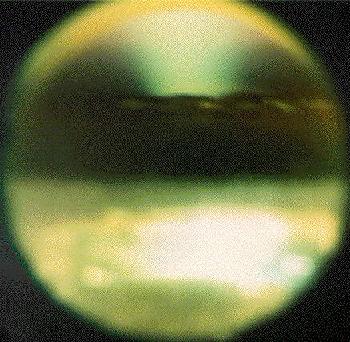
The Hot Anode Vacuum Arc (HAVA) has an anode which is thermally isolated, and thus the entire anode becomes hot. In the accompanying photograph the anode is in the form of a graphite crucible, supported by a thin tungsten rod, and surrounded by heat shields, in order to minimize heat losses. The crucible is filled with a more volatile material, in this case copper, which evaporates when the crucible temperature is sufficient and becomes partially ionized by the current flow between the electrodes. The cathode in this case is visible as the dark band across the middle of the photograph, and has a hole on its axis. When the anodic vapor pressure is sufficient, the anodic plasma fills the entire inter-electrode region, and part of it passes through the hole in the cathode to the upper region of the photograph. |
Imaging of the Hot Refractory Anode Vacuum ArcThe Hot Refractory Anode Vacuum Arc (HRAVA) is a plasma source in which material, originally emitted from the cathode as a combination of plasma jets and liquid metal droplets, is re-evaporation from the surface of a refractory anode, but without the droplets. This plasma can be used to deposit metallic films, e.g. for interconnects in integrated circuits. The photographs below show different stages of the HRAVA discharge development. Discharge parameters are summarized in the table below:
In the initial 3 frames, a plasma jet is seen originating from the one or two cathode spots on the cathode surface. Beginning at 20 s after arc ignition, a plasma plume is seen developing from the anode surface. |

Vacuum arc deposition is a process of producing coatings and thin films from the plasma produced in the vacuum arc. In the usual mode of operation, the plasma is produced at one or more cathode spots. Each cathode spot is a minute, very hot, molten region on the cathode surface, at which the electrical current to the cathode is concentrated. Vigorous local evaporation of the cathode material is produced by the high temperatures, while the concentrated current flow fully ionizes the cathode vapor, producing a plasma jet. The directed energy of the metal ions in these jets is typically 50-100 eV. The ions condense to form a thin film on any cool surface, and the energy of the ions helps to clean the surface and dislodge weakly bound atoms, thus producing strong dense coatings.
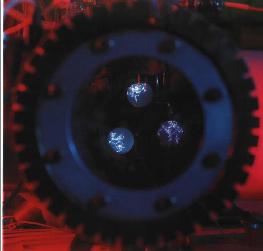
The picture on the left is an end view through an observation port of the cathode spots in a triple cathode vacuum arc deposition system during simultaneous operation of all three cathodes. The branched streaks on the cathode surfaces show the random path taken by the cathode spots, as well as spot splitting and extinguishing during operation. Each cathode can be constructed from a different material. Multi-component coatings can be produced by simultaneous operation, while multi-layer coatings are produced by sequential operation. Graded coatings whose composition changes gradually throughout the thickness are produced by simultaneous operation while gradually changing the ratio of currents supplied to the various cathodes. |
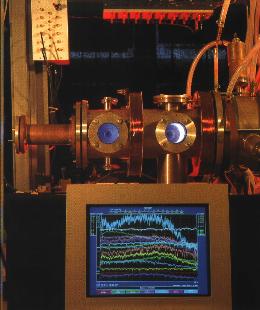
The photograph shows a side view of the triple cathode system. The cathodes are located on the right end of the system, and the glow produced by the metallic plasma beam is visible in the two observation windows. The oscilloscope displays waveforms of the arc currents, voltages, and chamber pressure. |
Repetitively pulsed submerged arc A pulsed electrical discharge can be ignited in an insulating fluid such as alcohol or water by either applying a high voltage between two electrodes, causing electrical break-down, or by ‘drawing’ an arc between two contacts, between which current is flowing, and then drawing one electrode away from the other. The Electrical Discharge and Plasma Lab is studying the application of pulsed submerged arcs for 1) producing nano-particles of various types, and 2) sterilizing water. The clip shows a repetitively pulsed submerged arc in water.
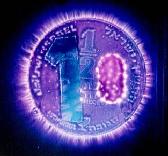
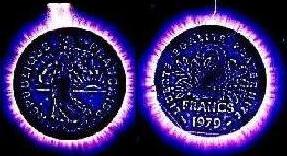
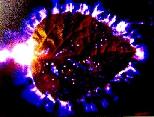
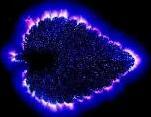
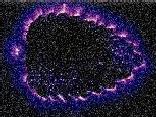
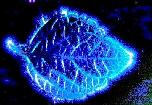
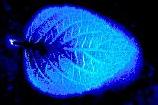
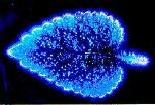
Last modified: March, 2005